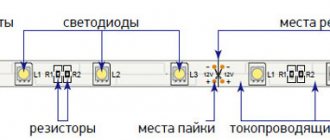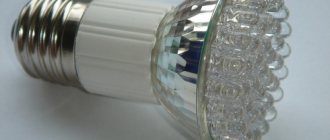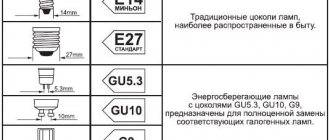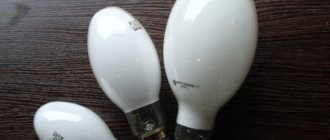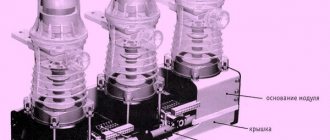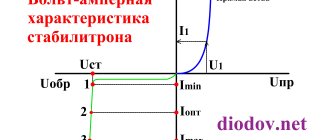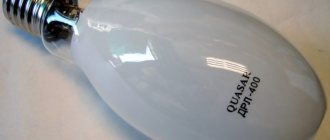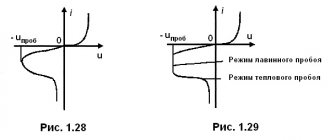The most common SMD type LEDs currently are LED SMD 5050. Despite the fact that their invasion around the world began quite a long time ago and more efficient diodes have already appeared, 5050 remains the most popular in the solid-state lighting market. This type of diodes began its “march” after SMD 3528. Compared to them, 5050 have a stronger glow (luminous flux). After their appearance, manufacturers rushed to widely use them in local lighting lamps, fortunately, due to their size, they easily (in large quantities) fit into the size of an ordinary lamp. Further use is LED strips.
If you look at today’s market, SMD 5050 ICE is mostly already used only in diode strips. Cheap and high-quality tapes can be bought here. General lighting lamps fade into the background with them (more often you can see decorative light bulbs on the counter). This is understandable; now the most effective lamps are 5630 and 5730 SMD, as well as COB. But still, diodes are needed to repair 5050 lamps. You can buy them here.
However, not everything is so “successful” here either. After all, filaments are already on their tail with leaps and bounds. Which have less heating compared to SMD, and therefore a longer service life due to little degradation of the crystals. We have a separate article on filament lamps and the filaments themselves, which you can read using our new “live” search. It’s better to check for yourself what it is. Well, this is a lyrical digression. And we will return directly to the discussion of the characteristics of SMD 5050 LEDs.
—> —>
For those who don’t really want to delve into all the characteristics of this type of diode, I will provide a summary table in which I will show the most “demanded” and necessary data. And in general, having received an assignment from the commanders of this site to write a number of articles with the characteristics of the most popular LEDs, I will adhere to the following plan: all articles will have a small descriptive part, basic brief characteristics and a complete Datasheet SMD 5050 (and other diodes) translated into Russian. So, let's get down to a brief description of the basic data.
Main characteristics of LED SMD 5050
SMD 5050 were developed for use in a variety of light sources. The main advantages, as practice has shown, are: long service life, stability of characteristics and high-quality performance. Practically not subject to vibration or temperature changes. The crystals are not affected by moisture and are designed for automatic installation. Although manual installation is quite possible with some skill. Main applications include general purpose luminaires, indicator devices, decorative lamps, automobiles and road signs. The 5050 consists of three crystals of equal power. They are produced in both single-color (white) and colored versions. We will consider both characteristics.
| Characteristics of SMD 5050 diode white | Values |
| Luminous flux, Lm | 18 |
| Power dissipation PD, W | 70 mW*3 |
| Operating temperature, Topr °C | — 40/+65 |
| Forward voltage, V | 3.3 |
| Maximum operating current, mA | 60 |
| Characteristics of SMD 5050 diode other colors | Values |
| Luminous flux, Lm (depending on color) | 12-18 |
| Power dissipation PD, W (depending on color) | 40-80 mW*3 |
| Operating temperature, Topr °C | — 40/+65 |
| Forward voltage, V (depending on color) | 2,0-3.3 |
| Maximum operating current, mA | 60 |
I can understand that now many people will have a question about the color LED SMD 5050 characteristics. Especially in those positions where it is indicated that they depend on color. Once again, this is general information for your information. You can read more accurate and detailed information below.
The features of this type of diode include the following:
- Low luminous flux degradation (less than 4% over 3000 hours of operation)
- The case is made from heat-resistant polymer that can withstand long-term temperature “load” up to 250 degrees Celsius
- The maximum temperature of the crystal at which it will not lose its properties too quickly is no more than 110 degrees
In principle, three main characteristics are enough for the common man - maximum operating current, luminous flux, voltage and power. Hmm... It turns out there are not three, but four characteristics. These are the ones you should pay attention to when choosing any LEDs if you are just starting your knowledge in the world of LED lighting. For a more detailed and in-depth study, it’s still worth turning to the full characteristics and dependence graphs of the SMD 5050. As for me, when choosing and selecting diodes, I mainly use only voltage, power and luminous flux. I study the rest using dependency graphs. It's easier for me. Yes, and it’s clearer. Figures, tables and descriptions are compiled by people, and therefore errors and typos are not uncommon. I know it from myself.
Peculiarities
The uniqueness of SMD 5050 lies in the peculiarities of the production process. Currently, this type remains the only widely used small-sized LED for SMD mounting, the design of which contains three separately controlled light-emitting crystals.
Such control makes it possible to obtain almost every tone of radiance, and also regulate this flow using a special controller.
Diode strips in 5050 ice chips can be divided into 3 types: plain, multi-colored, targeted. Single-color (monochromatic) ribbons are selected on the basis of three crystals that emit a single-color stream of light. In such a tape, the cross-section visually shows that there are only two connection contacts - “+”, “-”.
Original Datasheet LED SMD LED 5050
Main technical characteristics of LED SMD 5050 white and other colors
| Parameter | White SMD 5050 | Multi-colored SMD 5050 |
| Forward current,IF, mA | 20 *3 | 20 *3 |
| Pulse forward current, IFp, mA | 100*3 | 100*3 |
| Power dissipation,PD,W | 70 mW*3 | 40-80 mW*3 |
| Transition temperature, Tj, °C | 110 | 110 |
| Operating temperature, Topr, °C | -40/+65 | -40/+65 |
| Storage temperature, Tstg, °C | -55/+100 | -55/+100 |
| Soldering temperature, Tsld, °C | 300 | 300 |
The maximum soldering temperature is indicated when heating for no more than 2 seconds
Comparison tables of parameters
General table of technical characteristics 3528, 5050, 5630, 5730:
Comparison table of technical characteristics 3528, 5050, 5630, 5730
The type of LED is distinguished by crystal structure and color:
| Series | 3528/3528(RGB) | 5050/5050(RGB) | 5630 | 5730 |
| Crystal | Single-chip/triple-chip | three-crystal | single-chip | single-chip |
| Chroma | monochrome/full color | monochrome/full color | monochrome | monochrome |
Optoelectronic characteristics of SMD 5050
| Parameter | Min. | Type | Max | |
| Voltage drop, VF, V, at 60 mA | 3,2 | 3,3 | 3,4 | |
| 3,1 | 3,3 | 3,6 | ||
| 3,1 | 3,3 | 3,5 | ||
| 1,8 | 2,0 | 2,2 | ||
| 1,9 | 2,0 | 2,2 | ||
| Electrostatic discharge resistance, ESD, V | All colors | 1000 | ||
| Half brightness angle, degrees | All colors | 120 | ||
| Thermal resistance of the junction, Rth, °C/W | All colors | 6 | ||
| Power dissipation, PD, mW | 70*3 | |||
| 70*3 | ||||
| 70*3 | ||||
| 40*3 | ||||
| 50*3 | ||||
| Wavelength, nM | 465-470 | |||
| 525-530 | ||||
| 625-630 | ||||
| 590-595 | ||||
| Brightness,Iv,mCD | 900 | |||
| 3500 | ||||
| 1500 | ||||
| 1500 | ||||
As for the color temperature of white SMD 5050, crystals at 60 mA can produce the following shades:
Warm white: 3000 – 4000 K (CRI80)
Neutral white: 4300 – 4800 K (CRI80)
Pure white: 5000 – 5800 K (CRI75)
Cool white: 6000 – 7500 K (75)
By the way, I forgot a very important detail. The luminous flux in the table for white diodes is indicated for a color temperature of 5500K. For other colors, the following correction applies: in the range from 3000-4800K the luminous flux decreases by 10 percent, but in the range from 6000-7000K it increases by 10 percent. For colored crystals, the table contains data without corrections. Based on this, it is worth choosing LEDs based on brightness. Please note here that these characteristics “take place” only on high-quality diodes. In the Chinese market, I currently know of only three sellers (with whom I work closely) who offer to buy SMD 5050 with the characteristics closest to the “famous, real ones”. The difference in performance characteristics is no more than 4 percent. The most adequate and most efficient is HERE. Let's just say that you can order, but the price is also not the cheapest. You can find cheaper ones too. But here I can assure everyone that the diodes will not have the declared characteristics. Good things can't be cheap. Verified.
Video
For clarity, we suggest watching a video, the author of which made a lamp for the home based on 22 5050 LEDs. According to the author, the lamp consumes only 4.2 Watts at a voltage of 222 Volts (measurements were carried out with a wattmeter).
To summarize, we can say that the emergence of brighter and more powerful LEDs has not forced SMD 5050 out of the market. It’s just that their scope of application has shifted towards the production of LED strips. Proven technology, good lighting and energy characteristics of LED 5050 allow us to produce reliable and energy-efficient lighting products.
Graphs of the main characteristics of SMD 5050 white
Graphs of optical-electronic characteristics of white SMD 5050
1 of 7
Luminous flux distribution diagram
Permissible current from the environment
Dependence of luminous flux on ambient temperature
Dependence of luminous flux on current
Current versus voltage
Change in luminous flux from clock to clock
Spectral composition of SMD 5050 radiation
Selecting rgbw LED strip
When choosing an LED strip, you will need to calculate the power parameters required for operation, determine the brightness level, and also carefully study all the data about the manufacturer. It is recommended to avoid little-known Chinese manufacturers, as the quality of such products leaves much to be desired.
Calculation of total power consumption
Before purchasing a tape, you must make some kind of calculations in order to purchase a power supply with a certain margin. For calculations, you need to know the type of tape, its size parameters, power consumption, and operating voltage. To calculate the power consumption parameters, you will need to calculate the product of power per meter by the total length. 1.2% is also taken into account as an additional factor (load on the power supply) and 20% is added as a power reserve, which will increase the durability of the tape several times.
Calculation of lighting brightness
LED strip 5050 60 led is considered one of the most popular, as it allows you to get a fairly bright glow, it is used in the accent design of various decorative elements, furniture, in the advertising field, and in the design of the ceiling. But options 120 can be used not only as a decorative element, but also as an element of the main lighting of the room. The higher the density, the more significant the brightness will be.
Most popular manufacturers
When choosing strips and components for lamps, you need to evaluate all the technical characteristics described above. An equally important aspect of choice is the manufacturer. Preliminarily study all the data about certain companies in order to choose in the future high-quality products that can serve you for many years. The following companies are especially popular in our country: Dreamled, Jazzway, Arlight Camelion, Gauss. Famous manufacturers offer not only LED strips, but also automotive lamps, which allows potential buyers to find optimal solutions for individual tasks.
Main characteristics of RGB SMD 5050 LED
I thought I was finishing the article, but then I remembered... But I didn’t write about RGB diodes. I urgently had to open the Datasheet and hastily translate it. In principle, there is nothing complicated in these chips. Everything is outrageously simple.
In terms of application, little changes either. It is most preferable to use diodes in general-purpose lamps, indicator devices, decorative lamps, and cars.
| Characteristics of the SMD 5050 RGB diode | Red | Green/Blue |
| Power dissipation PD, W | 80 | 100 |
| Operating temperature, Topr °C | — 40/+95 | — 40/+95 |
| Forward voltage, V | 1,6-2,0 | 2,8-3.2 |
| Maximum operating current, mA | 30 | 30 |
Flaws
- Sensitivity to tension. The LEDs must be supplied with a voltage above their threshold and a current below their rated value. The current and service life vary greatly with small changes in the specified voltage. Thus, they require a regulated current supply (most often a series resistor for indicators).
- Color rendition. Most cool white LEDs have different spectra that are quite different from the absolute radiation of a black body such as the sun.
- The jump to 460 nanometers and the dip at 500 nanometers can cause the color gamut of objects to look different under cool white light than under sunlight or incandescent light. Due to metamerism, red surfaces are poorly illuminated by phosphorus cool-white lamps.
Original Datasheet LED RGB SMD 5050
| Parameter | Red | Blue; green |
| Forward current,IF, mA | 30 | 30 |
| Pulse forward current, IFp, mA | 100 | 100 |
| Power dissipation,PD,W | 80 | 100 |
| Transition temperature, Tj, °C | 110 | 110 |
| Operating temperature, Topr, °C | -40/+95 | -40/+95 |
| Storage temperature, Tstg, °C | -40/+100 | -40/+100 |
| Soldering temperature, Tsld, °C | 300 | 300 |
Connection rules
A classic combination of current limiter and LED is used. Absolutely all monocrystal designs are connected using this scheme. The only difference is in the nominal characteristics of the current-limiting element (read more about calculating a resistor for an LED).
The exception is LEDs with three crystals on an LED matrix.
A three-chip SMD matrix, for example, in the 5050 series, has three anodes and three cathodes. It connects as three independent elements. For the RGB model 5050, the characteristics in the datasheet are written for each diode, since they have different power consumption parameters.
LEDs 5050 - connection diagram
Such connection requirements are due to the fact that even absolutely identical crystals will have differences in the supply current and connecting without a current limiter will simply damage one of them.
REMEMBER!
- It is not recommended to connect any LED models to a power source without a resistor. When using one resistor, only one type of LED can be connected in series.
- In the case of using three-crystal diodes, each channel is connected through a separate resistor and connected to the same diode in the next module.
- Do not connect LEDs with different load characteristics. In simple words, do not connect 3528 and 5050 together.
- It is strictly contraindicated to use resistors with a resistance less than the nominal value. This will increase the load current of the LED and shorten its service life.
- https://svetilnik.info/svetodiody/smd-5050.html
- https://lampagid.ru/vidy/svetodiody/smd-5050
- https://svetodiodinfo.ru/texnicheskie-momenty/smd-3528-5050-led-parametry-i-xarakteristiki.html
Soldering characteristics of SMD 5050
Very often the question arises among amateurs, “how to properly solder SMD 5050 diodes.” For me there is nothing complicated about this anymore. But to complete the picture, I will give a number of theses that need to be followed in order to get a high-quality result quickly, without rework.
- SMD 5050 should be soldered no more than once
- Don't put too much pressure on your body
- Do not turn the circuit board over until the solder has cooled completely.
- Use only low-temperature solder paste in your work.
- In manual mode, the temperature of the soldering iron should not exceed 300 degrees Celsius
- The maximum soldering time is no more than 2-3 seconds
Where and how it is used
LEDs have many advantages over classic incandescent lamps, including lower power consumption and longer service life. Their physical durability has been improved, their size has been reduced, and their switching has become faster.
LED light sources are used in a wide variety of applications such as aviation lighting, automobile headlights, outdoor and indoor advertising. They are used in traffic lights and camera flashes, and are also used in luminous wallpaper and medical equipment. When combined with the small GX53 LED lamps, the quantity and quality of light will increase significantly.
LED size 5050
All dimensions are given in millimeters, measurement accuracy is +- 0.1mm. During production of diodes, dimensions may change very slightly.
The lens used in production is transparent. The chip is based on InGaN. Typically, the lens consists of a silicone compound. The case itself is made of heat-resistant plastic.
LEDs of this brand are supplied in coils.
Well, that seems to be all... I tried to describe the SMD 5050 as fully as possible. It turned out to be a lot of buffoonery, but at a quick glance, I didn’t seem to have missed anything. If something is wrong, don't kick it too hard. Ready for constructive communication))) Lastly, for those who are not too tired, you can watch a video about proper installation and soldering of SMD 5050.
What it is
An LED is a semiconductor diode that emits light when current passes through a two-pin connector. To do this, the following conditions are necessary. The actual width of the LED band gap should be close to the energy of light quanta in the visible range. During the process of recombination of electric hole pairs, the probability of light emission should be quite high.
It follows that the semiconductor crystal itself should not have significant shortcomings or defects in which recombination occurs without radiation. To ensure that these conditions are met, special multilayer heterostructures are manufactured, which mark a new stage in the development of LED technology. The first samples were built into metal cases, somewhat similar to transistors, with a glass window or lens for light to escape.
Modern LED indicators are built into transparent molded plastic housings. They are tubular or rectangular in shape and are often tinted to match the color of the device. Infrared devices can be colored to block visible light. More complex packages are adapted for efficient heat dissipation in high-power LEDs. These overhead LEDs further reduce the size of the housing. LEDs designed for use with fiber optic cables usually come with an optical connector.
